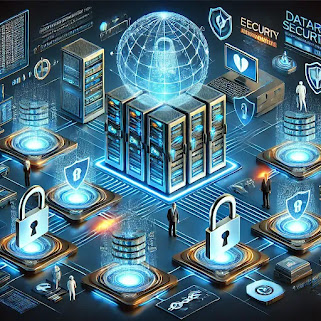Understanding Network Management and Security: Ensuring Reliable and Secure Connectivity
Network management and security are critical aspects of modern computing, ensuring efficient operation, performance optimization, and protection against cyber threats. This blog post explores network management, its key components, and the importance of cybersecurity in today's interconnected world.
1. What is Network Management?
Network management refers to the process of monitoring, maintaining, and optimizing a computer network to ensure seamless communication and data flow. It involves various functions, such as performance monitoring, fault diagnosis, configuration management, and security enforcement.
2. Key Aspects of Network Management
a. Network Monitoring
Involves tracking network activity, performance, and traffic patterns to detect anomalies.
Tools like Nagios, PRTG, and SolarWinds help in real-time monitoring.
b. Configuration Management
Ensures that network devices (routers, switches, and firewalls) are correctly configured.
Helps maintain consistency, reduce downtime, and optimize resource utilization.
c. Performance Optimization
Focuses on reducing network congestion, latency, and bottlenecks.
Techniques like load balancing and Quality of Service (QoS) improve network efficiency.
d. Fault Management
Identifies, diagnoses, and resolves network failures or malfunctions.
Proactive troubleshooting minimizes downtime and prevents service disruptions.
3. Importance of Network Security
Network security is vital for protecting sensitive data, preventing unauthorized access, and mitigating cyber threats. Businesses, government agencies, and individuals must implement robust security measures to safeguard their networks.
4. Common Network Security Threats
Malware & Ransomware: Malicious software that disrupts operations or demands payment for data access.
Phishing Attacks: Deceptive emails or messages designed to steal login credentials and personal information.
DDoS Attacks: Overloading a network or website with excessive traffic to render it unavailable.
Man-in-the-Middle Attacks: Intercepting communication between two parties to steal or alter data.
Insider Threats: Security risks posed by individuals within an organization.

5. Essential Network Security Measures
a. Firewalls & Intrusion Detection Systems (IDS)
Firewalls filter network traffic to block unauthorized access.
IDS monitors network activity for suspicious behavior and alerts administrators.
b. Encryption & VPNs
Encryption ensures that data transmitted over a network is secure and unreadable to unauthorized parties.
Virtual Private Networks (VPNs) establish secure connections over public networks.
c. Multi-Factor Authentication (MFA)
Adds an extra layer of security by requiring multiple forms of verification before granting access.
d. Regular Software Updates & Patch Management
Keeping software and firmware up to date helps fix vulnerabilities and prevent exploits.
e. Security Awareness Training
Educating employees about cybersecurity best practices reduces the risk of human error and phishing attacks.
6. Future Trends in Network Management and Security
AI & Machine Learning: Enhancing real-time threat detection and automated responses to security incidents.
Zero Trust Architecture: A security model that requires verification for every access request, regardless of location.
Blockchain-Based Security: Utilizing decentralized ledgers for improved authentication and data integrity.
5G & IoT Security: Addressing vulnerabilities in the growing number of connected devices.
Effective network management and security are crucial for maintaining a stable, efficient, and secure computing environment. As cyber threats continue to evolve, businesses and individuals must adopt advanced security strategies to protect their networks from potential attacks.
References
Stallings, W. (2020). Foundations of Modern Networking: SDN, NFV, QoE, IoT, and Cloud. Pearson.
Tanenbaum, A. S., & Wetherall, D. (2011). Computer Networks. Pearson.
Kurose, J. F., & Ross, K. W. (2017). Computer Networking: A Top-Down Approach. Pearson.
Schneier, B. (2015). Data and Goliath: The Hidden Battles to Collect Your Data and Control Your World. W. W. Norton & Company.
Symantec. (2023). Cybersecurity Threats Report. Retrieved from https://www.symantec.com
Cisco. (2023). Networking and Security Best Practices. Retrieved from https://www.cisco.com






Comments
Post a Comment